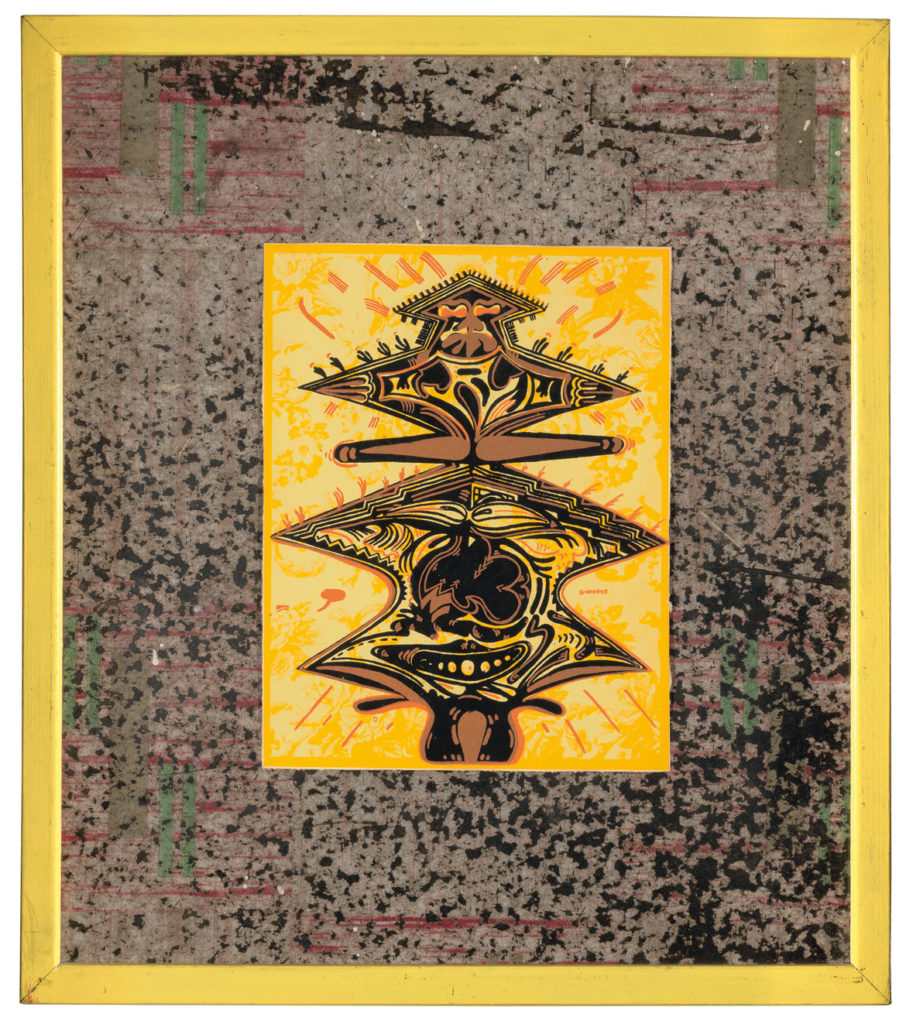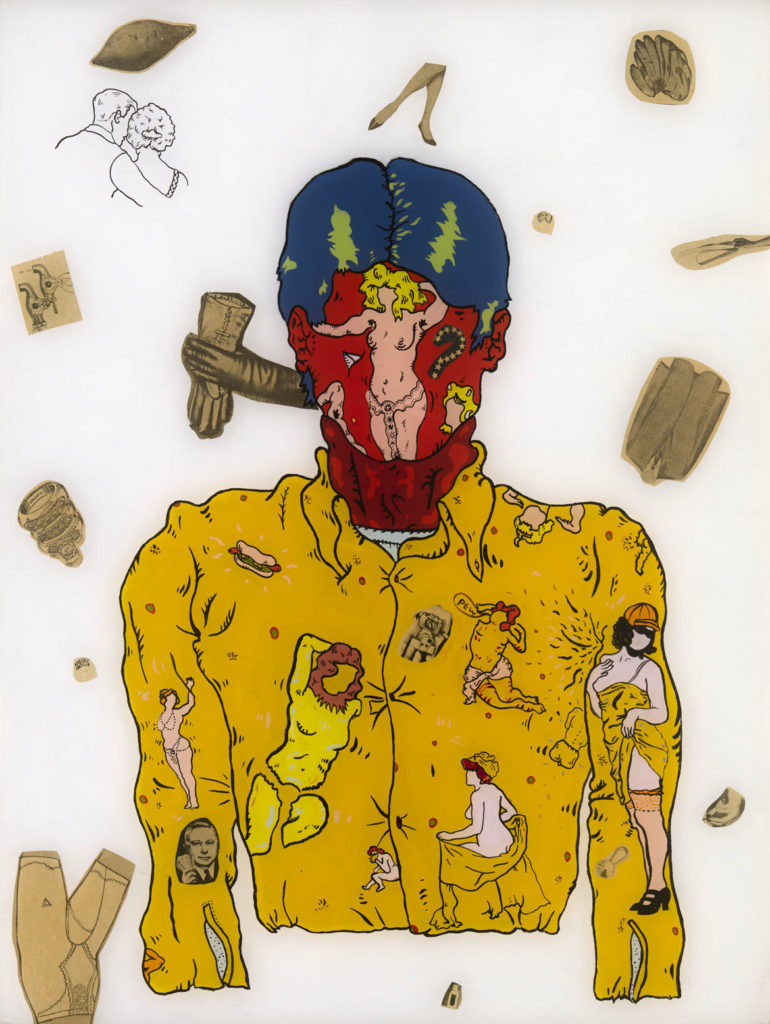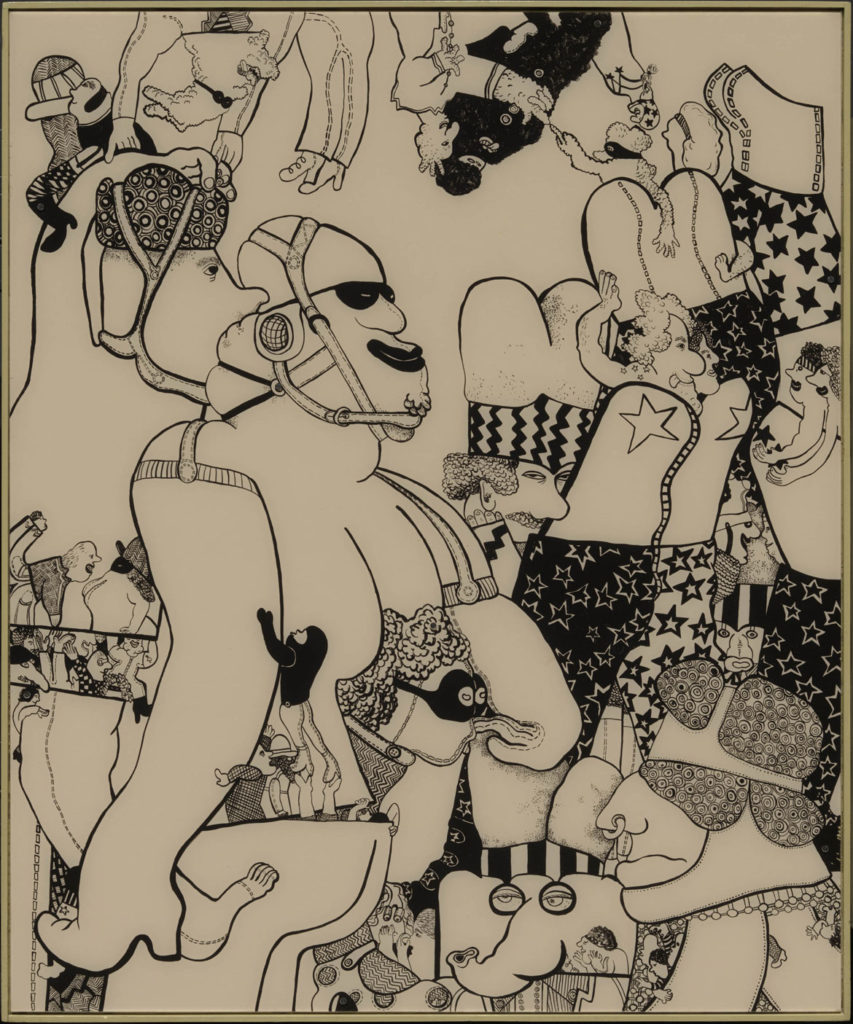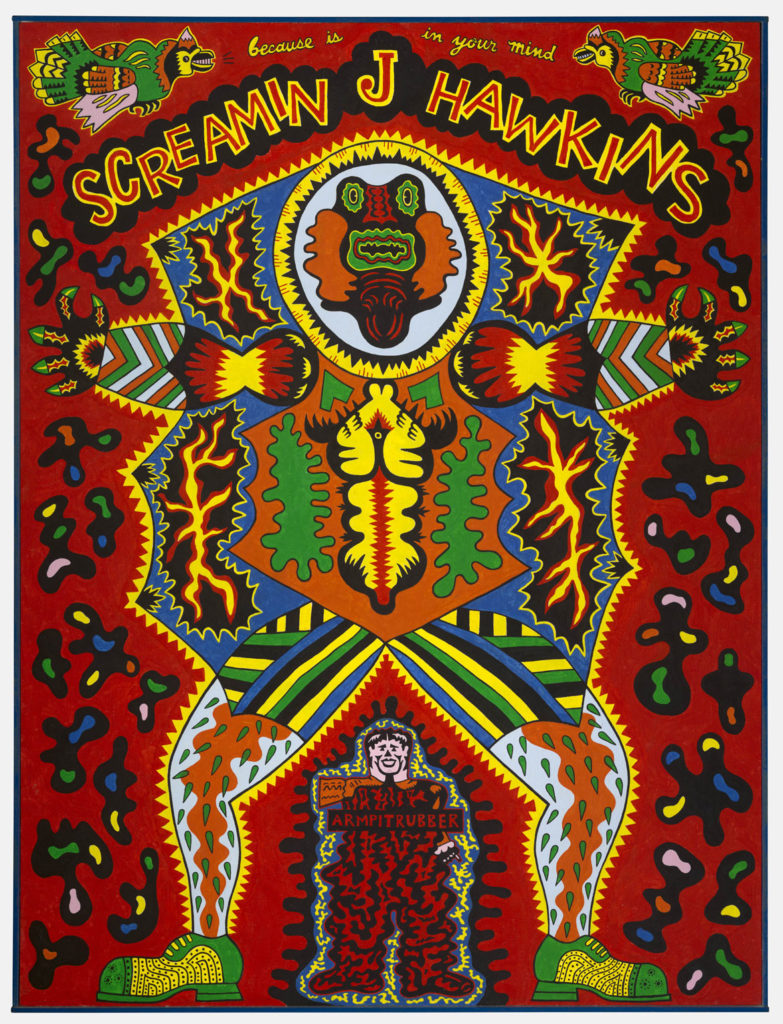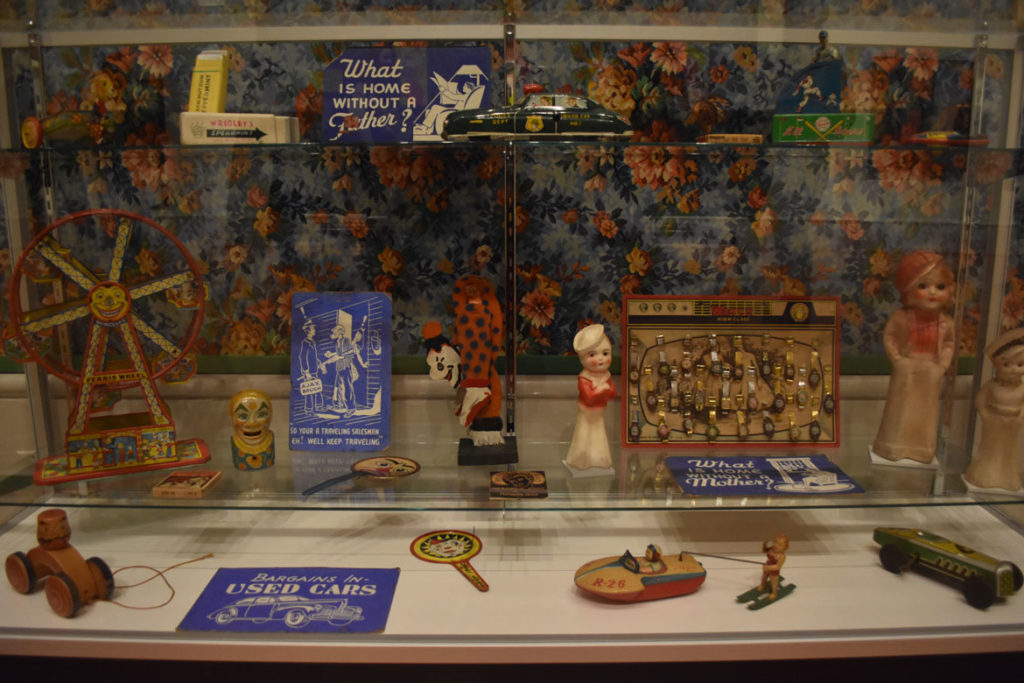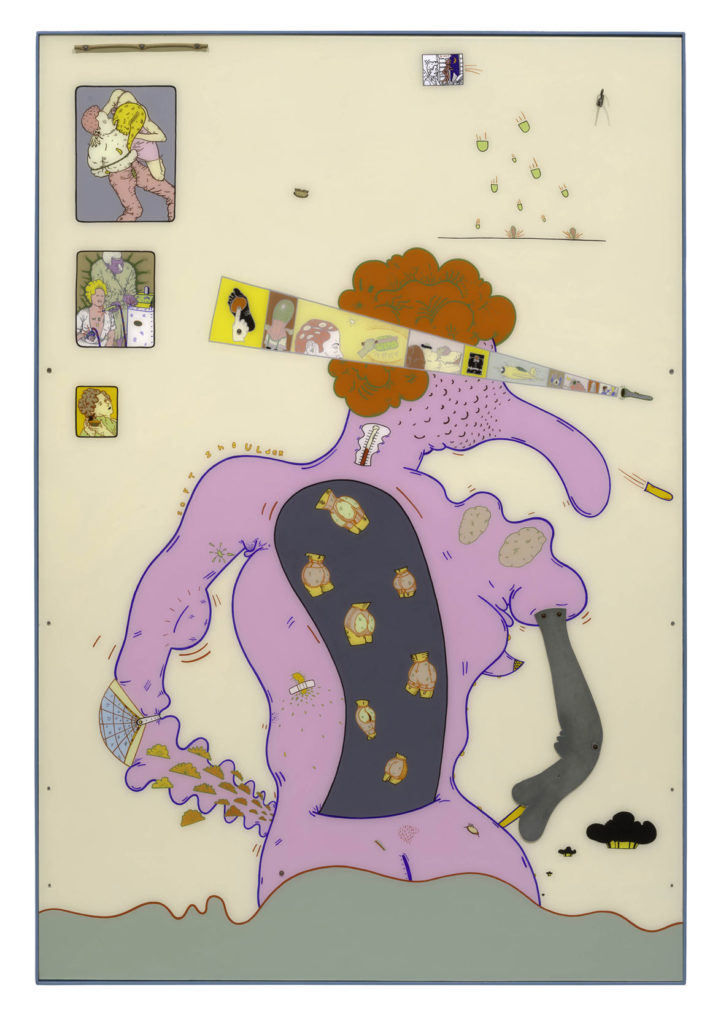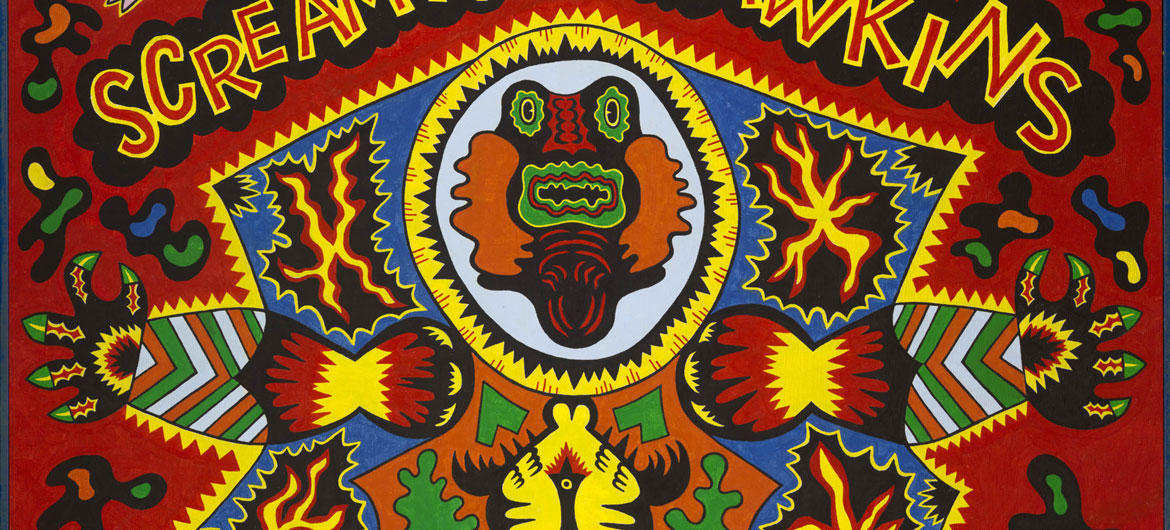In the mid 1960s, Jim Falconer and Jim Nutt—recent graduates of the School of the Art Institute of Chicago, who’d met working at Chicago’s Allan Frumkin Gallery (which exhibited H.C. Westermann and Peter Saul, among others)—came up with the idea to propose a group exhibition of new Chicago pop art to the Hyde Park Art Center on the city’s South Side.
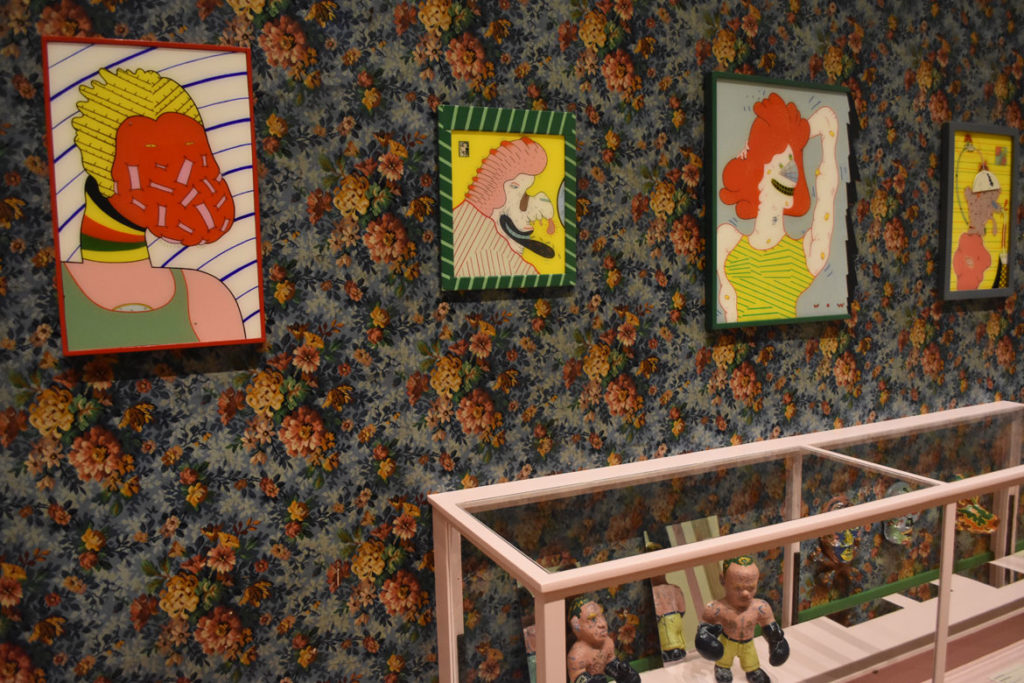
The Chicago art scene “was beset with challenges to access, exposure and growth,” Robert Cozzolino writes in the 2018 book “Art In Chicago: A History from the Fire to Now.” Don Baum, the exhibition chairman at the Hyde Park center, had been part of a group of young artists in the late 1940s and ‘50s, who felt excluded by the Art Institute, so in response they organized “Exhibition Momentum,” their own series of exhibitions from 1948 to ’57. Since Baum began managing exhibitions at the center in 1956, he had developed a reputation for showcasing emerging artists in group exhibitions and creating a nurturing scene around the center. He agreed to give Nutt, Falconer and their friends Art Green, Gladys Nilsson and Suellen Rocca a show in February 1966—and suggested they add Karl Wirsum.
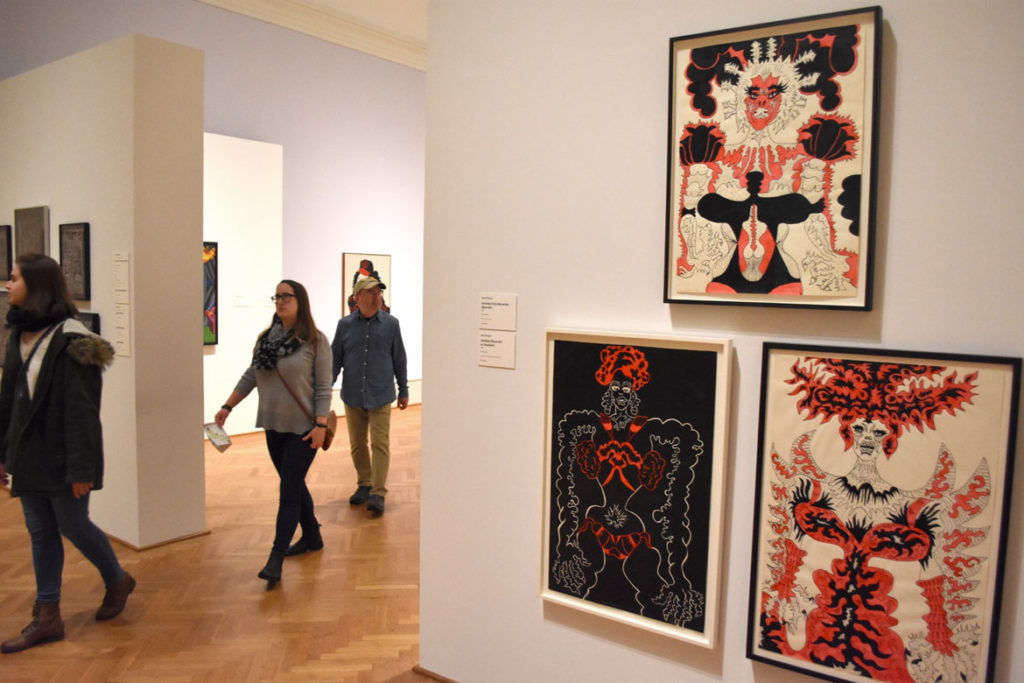
These young White artists, all in their 20s, were inventing a new flavor of pop art that came to be known as Chicago Imagism. It was inspired by comics and commercial advertising as well as old dolls, tin toys and other treasures they discovered at the Maxwell Street Market, a giant outdoor flea market/junk extravaganza on the city’s South Side, and art from Oceana, Africa, Asia and Native America that they studied at Chicago’s Field Museum of Natural History—which Wirsum dubbed “the Louvre of Chicago art”—and the University of Chicago’s Oriental Institute. It was more Hippie than the Pop Art that came out of New York earlier in the decade. But the primary difference between what Andy Warhol and Roy Lichtenstein and other New Yorkers made and what these Chicago artists were producing was that the New Yorkers pretty closely copied their pop sources, while the Chicagoans digested comics and neon signs to invent their own pop language.
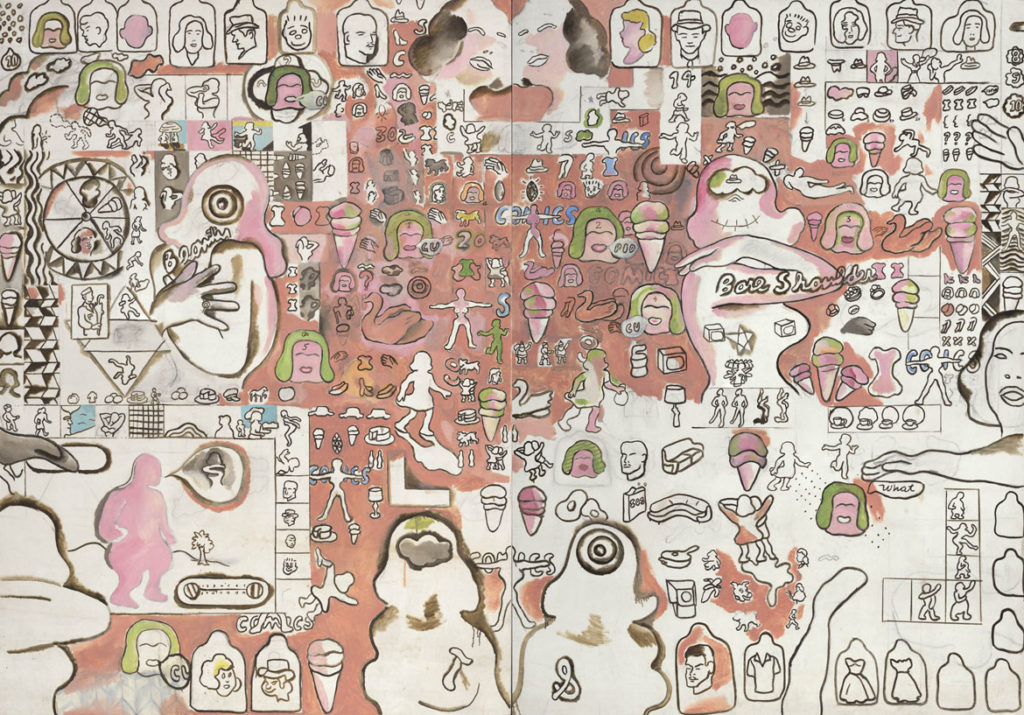
“One sees [comics and advertising] as art in themselves, not something to be blown up to make art, but as something parallel to your own work,” Chicago Imagist painter Roger Brown said in a 1978 Art In America magazine interview. “These things are already art: so if you can make art as good, you’re really lucky.”
For that 1966 Hyde Park exhibition, the six artists called themselves “The Hairy Who.” The name was reportedly arrived at when Wirsum wandered into a group discussion of the conservative radio art critic Harry Bouras and asked, “Harry who?” Also, they loved puns.
That first Hairy Who show was a sensation. The art was humorous, sordid, goofball, raucous, grotesque, psychedelic, sexual, mischievous, violent. “A barbaric yelp on canvas,” Chicago Sun-Times critic Harold Haydon wrote at the time.
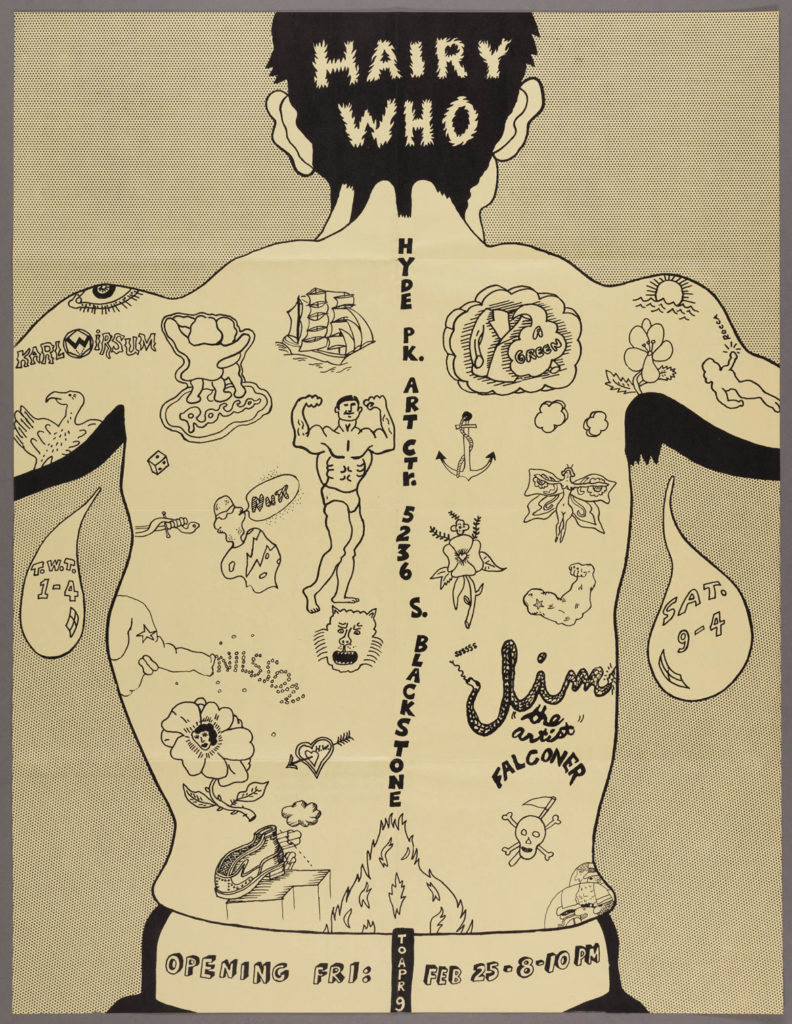
You can see many of these original pieces in “Hairy Who? 1966–1969” at the Art Institute of Chicago from Sept. 26, 2018, to Jan. 6, 2019. One part of the exhibit assembles art from their groundbreaking exhibitions from 1966 to ’68 at the Hyde Park Art Center, at the San Francisco Art Institute in 1968, and at New York’s School of Visual Arts and the Corcoran Gallery of Art in Washington, D.C., in 1969. The second part of the exhibition highlights the group’s posters, comic book catalogues, drawings and ephemera.
The Art Institute exhibitions are a sort of time machine, often displaying artworks in groupings that match or echo the ‘60s exhibitions. The shows also evoke the way the Hairy Who hung their art on walls covered with cheap floral-print linoleum and alongside display cases featuring tin toys, candy packages and other pop culture ephemera that inspired them.
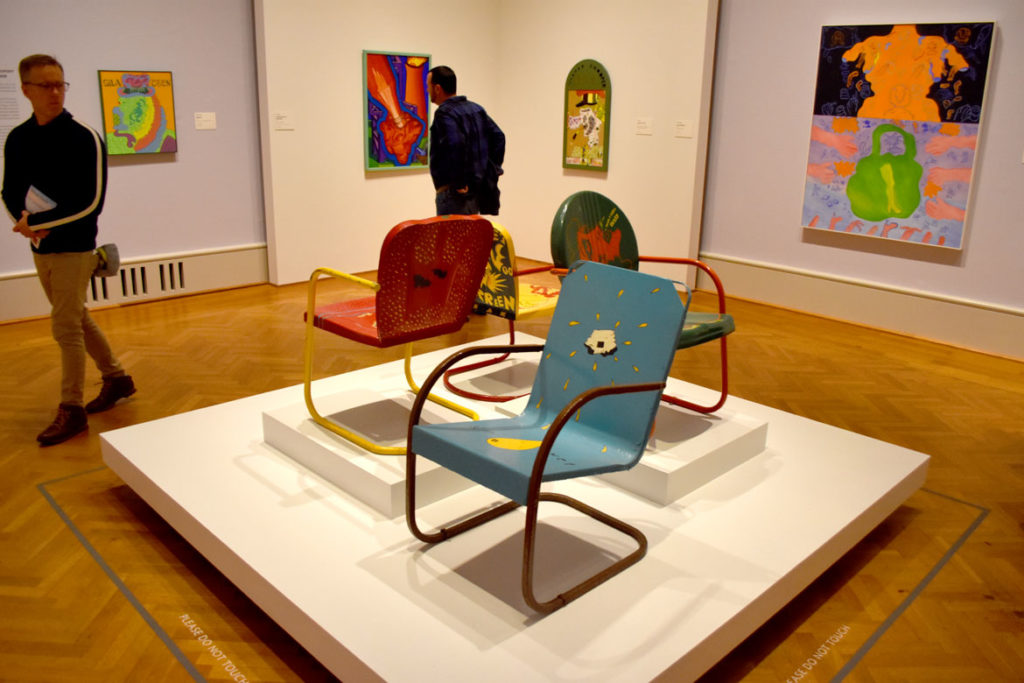
The Hairy Who were part of the larger Chicago Imagism phenomenon—including Roger Brown, Philip Hanson, Ed Paschke, Christina Ramberg, Barbara Rossi and Ray Yoshida. The museum acknowledges this larger context with “I’ll Show You! Posters and Promos from Chicago’s Famous Artists,” a small selection of posters, prints and photos by Chicago Imagists in the museum’s Ryerson Library from Sept. 4, 2018, to Jan. 7, 2019.
These were White artists mainly residing on the city’s North Side showing in Hyde Park, a White bohemian enclave around the University of Chicago, in the predominantly Black South Side. As the Hairy Who were debuting, Black South Side artists, almost entirely excluded from Chicago’s White art world, were painting “The Wall of Respect,” a mural of Black heroes that within a few years would spark Black Power murals all across the country. Some of the muralists would form AfriCOBRA (African Commune of Bad Relevant Artists), which made psychedelic Black Power art in bright “coolade” colors to address racist America’s attacks on Blacks, while also presenting positive images in support of Black families and the African American community.
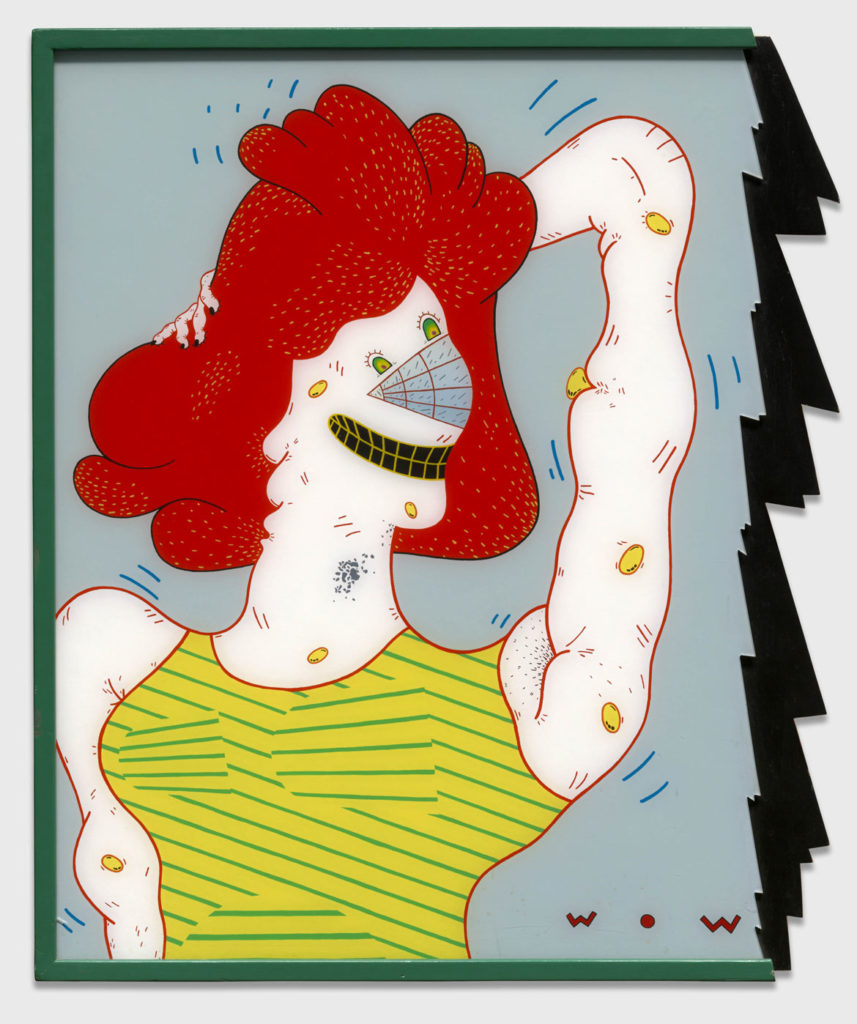
In contrast, the Hairy Who’s concerns seemed mainly internal, focused on messily imperfect human bodies, and adding perhaps some sort of questioning of the sordidness of consumer culture, even as they reveled in it.
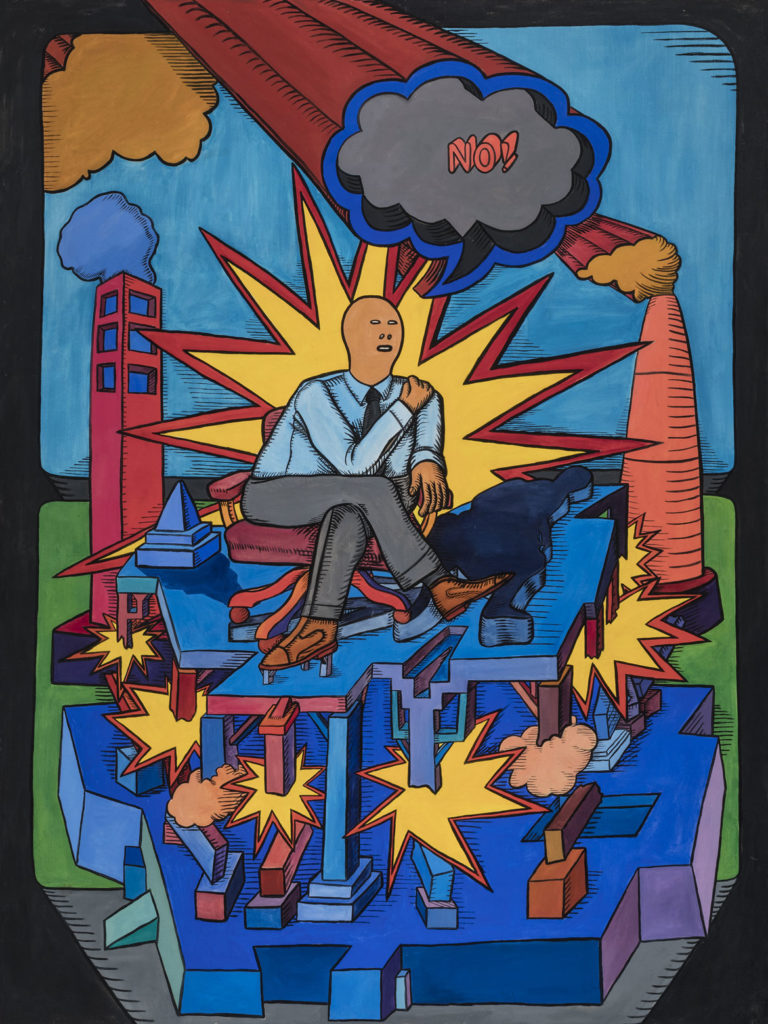
Art Green has said his 1965 surrealist cartoony painting “Consider the Options, Examine the Facts, Apply the Logic” was inspired by then Secretary of Defense Robert McNamara seated in his office. But also inspired by his conflicted relationship with his own father. In the painting, an anonymous man with a mask-like face sits in an exploding building between smoking chimneys and he says “No!” “As my work developed during the Hairy Who years,” Green said, “I found other ways to explore the terrain between rationality and irrationality, order and chaos.”
Falconer, however, would cofound the Chicago branch of Artists Against the War in Vietnam. Paschke would address the Vietnam War in his canvases. Ramberg’s paintings could seem a feminist critique of the strictures of traditional feminine deportment. And Brown addressed politics, homosexuality, and the apocalypse.
If this is the kind of coverage of arts, cultures and activisms you appreciate, please support Wonderland by contributing to Wonderland on Patreon. And sign up for our free, weekly newsletter so that you don’t miss any of our reporting.

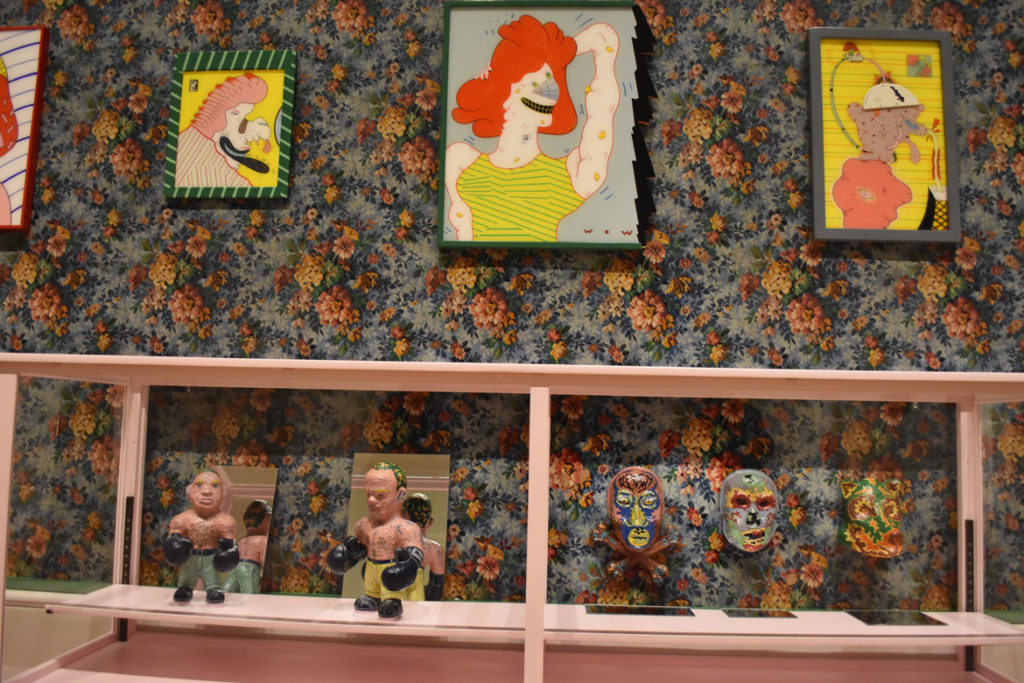
Jim Nutt, “Now! Hairy Who Makes You Smell Good,” 1968.

